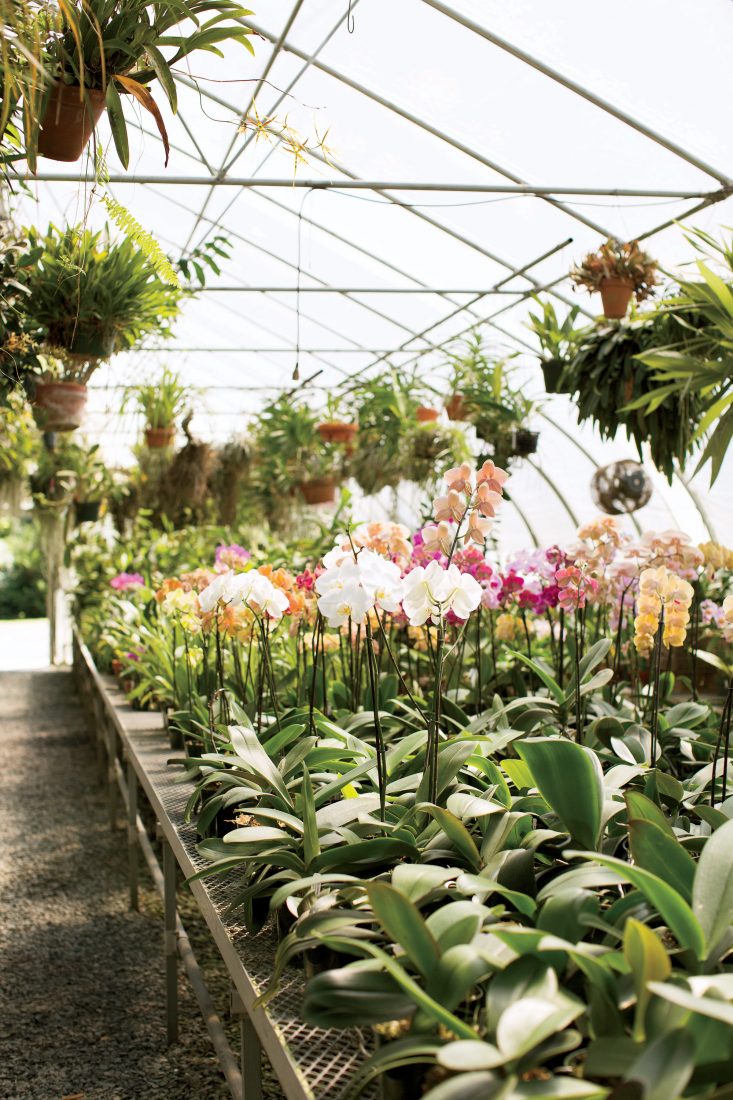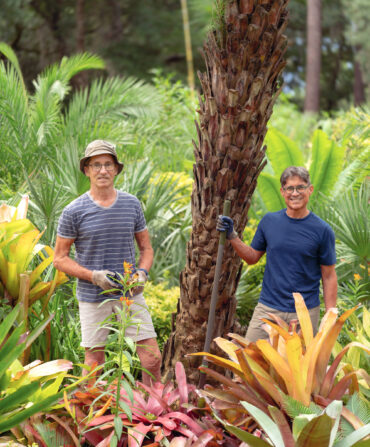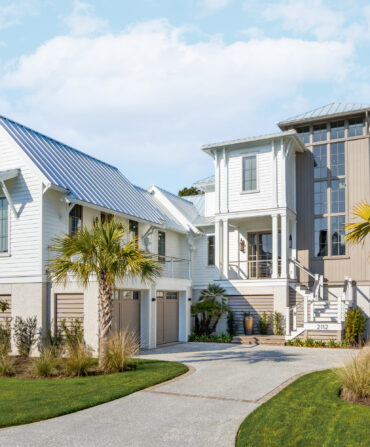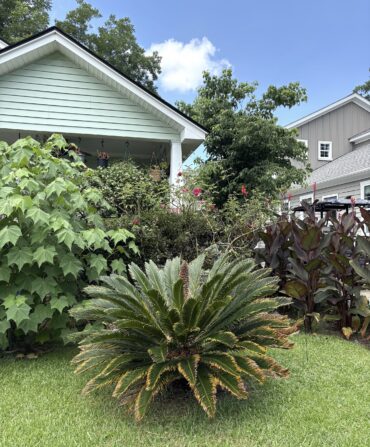Floradise Orchids is a blink-and-you’ll-miss-it spot, a shady hideaway alongside James Madison Highway, in Gordonsville, Virginia. But as soon as you walk into the warm thick air of the arched-roof greenhouse, and you’re surrounded by the vivid colors and exotic shapes of a thousand blooms, you’ll know this isn’t your average roadside find.
Janet Cherchuck and Stephen Shifflett have been in business here, about a half hour’s drive from Charlottesville, for thirty-seven years. That’s a long time to dedicate to a singular pursuit, but then again, orchids are known to inspire devotion. “For us it’s been a sort of instinctive thing,” says Cherchuck, who met Shifflett at the University of Maryland in the seventies. She was studying library science and he horticulture, so it’s fitting that they bonded over a book about plants—Orchids You Can Grow, which Shifflett discovered in a secondhand store. The book guided him in cultivating a collection of dwarf orchids at his house (on Orchid Drive, no less).
Today, a handful of those plants are part of the much larger and more rarefied collection at Floradise. More than a thousand varieties—“We don’t really have time to get an exact count,” Cherchuck says—fill the tables and hang from the walls and metal-tube framing of 5,500 square feet of greenhouse space. With a few exceptions, most are available for purchase, and each one comes with a story. There’s the Dancing Doll orchid (Oncidium flexuosum), grown from a cutting procured from a fellow enthusiast in 1982, whose skirted flowers swivel and bob in the wind. Vanda Pakchong Blue, derived from Vanda coerula, is prized for its unusual hue and its curative powers—extracts are used to treat cataracts and glaucoma. And perhaps most impressive this time of year is an oversize beauty named Bulbophyllum echinolabium (Stinky Star), whose uniquely fragrant bloom measures fifteen inches from the top of its pointed hat to the bottom of its Fu Manchu–esque mustache.

Patricia Lyons
A Vanda Pakchong Blue orchid.
This is an interesting time to be in the orchid business. Once costly and hard to find, orchids are now the top-selling potted flower in the United States, available for ten bucks or less at big-box stores, supermarkets, and even gas stations. The glut is due partly to a flood of imported moth orchids, or Phalaenopsis, from Taiwan.
It would be easy for Cherchuck and Shifflett to crank out only a bunch of Phalaenopsis and cash in on the orchid boom. But they are prospering precisely because they bucked the trend, producing relatively small quantities of unusual orchids for discerning customers, among them a growing number of collectors. “The increase in availability everywhere has helped us, because it exposes more people to orchids than we ever could,” Cherchuck says. “A certain percentage of those people develop more than a superficial interest. Those are our customers.”

Patricia Lyons
Janet Cherchuck and Stephen Shifflett.
Known largely by word of mouth, Floradise serves devotees who regularly pilgrimage to Gordonsville. The plants also draw crowds at farmers’ markets in Dupont Circle, in Washington, D.C.; and in Falls Church, Virginia, and decorate the interiors of embassies, restaurants, inns, and clients’ homes. “People come to us and see things they’ve never seen before,” Cherchuck says. “We get comparisons to botanical gardens all the time.”
The couple’s combined orchid knowledge is bottomless, and their penchant for storytelling feels as distinctly Southern as Floradise itself. “We like developing long-term relationships with our customers, acting as curators, in a way, and matching people with plants we know they’ll like,” Cherchuck says. “Whether on a patio during the long growing season or indoors during the winter, orchids are welcoming and have a sense of warmth— and that, in my view, is what the South is all about.”








